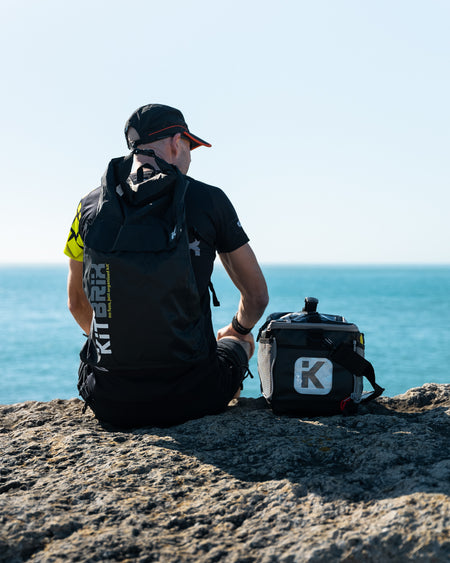
Are you new to triathlons? At Kitbrix we have answered your most frequently asked questions so you know exactly what to expect during a triathlon swim...

1. I want to compete in a triathlon but I don’t like swimming
For many athletes, the swim portion of the triathlon is the least favourite. If you would like to have the quickest swim possible, you can consider competing in one of the shorter distance triathlons. For example a Super Sprint Triathlon only has a swim distance of 0.3 miles or 400 metres. Alternatively, if you would like to avoid swimming all together, you can compete in a race known as a Duathlon. A Duathlon is made up of three legs; running, cycling and running.
2. Do all swims for a triathlon take part in open water?
Each triathlon is different, run by different organizers and in different locations. This means each swim is different from the next. Depending on which triathlon you partake in you may be swimming in a heated indoor pool at a leisure centre, a cold outdoor pool, an icy lake, between two piers in open water or even from a boat adjacent to the Alcatraz Island. The important thing is to do your research and only sign up for a race with a swim you are comfortable and confident competing in.

3. How can I avoid the crowd in an open water swim?
During an open water swim there can tend to be a tightly packed group of competitive swimmers. These will swim on the inside if there are any corners marked out. To avoid the scrum swim on the outside of these turns and hang back if you are not racing competitively. Map out your route prior to the race.
4. What do you wear for a triathlon swim?
As all triathlon swims are different, so are their rules on what you can and cannot wear. Again, do your research for each individual race. For example, some swims you MUST wear a wetsuit due to the cold water temperatures at the race location. It is important to note however that water temperature can change, so come prepared with a wetsuit if this is a possibility. The USAT guidelines are as follows…
- You may wear a wetsuit if the water temperatures is 25.5 C (78 F) or below
- You may not wear a wetsuit if the water temperature is 29.5 C (85 F) or above
- The water cannot be cooler than 16 C (60.8 F)
- Races 5 km and longer should not have water temperatures warmer than 29.45 C (85 F)
- The air temperature and water temperature should not equal more than 63 C (177.4 F) or be less than 30 C (118 F) when added together
5. Do I have to use front crawl when swimming for a triathlon?
Whilst it is completely up to you, front crawl is generally the favoured swim stroke for triathletes. It is fast, effective and allows you to orientate yourself, especially in open water swims where there are no ropes. Backstroke can therefore be problematic during these events as you cannot see in front of you, so flag this up to your event organiser prior to race day.
6. How do I get out of a wetsuit quickly during transition?
For races that do not require a wetsuit, a triathlon suit can often be left on after the swim. This is because they are thin, flexible and fast drying. However, if you are required to wear a wetsuit you will want to remove this before the next leg of the race. To remove a wetsuit quickly, pull on the long toggle at the back to unzip, pull down on the front neck over both shoulders and down to the knees. Then step one leg out and stand on the rest of the suit to provide tension. This will allow you to pull out the other leg whilst you remove your swim hat and goggles with free hands.

7. What ‘aids’ can I wear during a triathlon swim?
Generally speaking, the only aids you are allowed during a triathlon swim are a cap, nose clip, goggles and a costume/wetsuit.
Looking for more? You can read our other FAQ blogs here...







